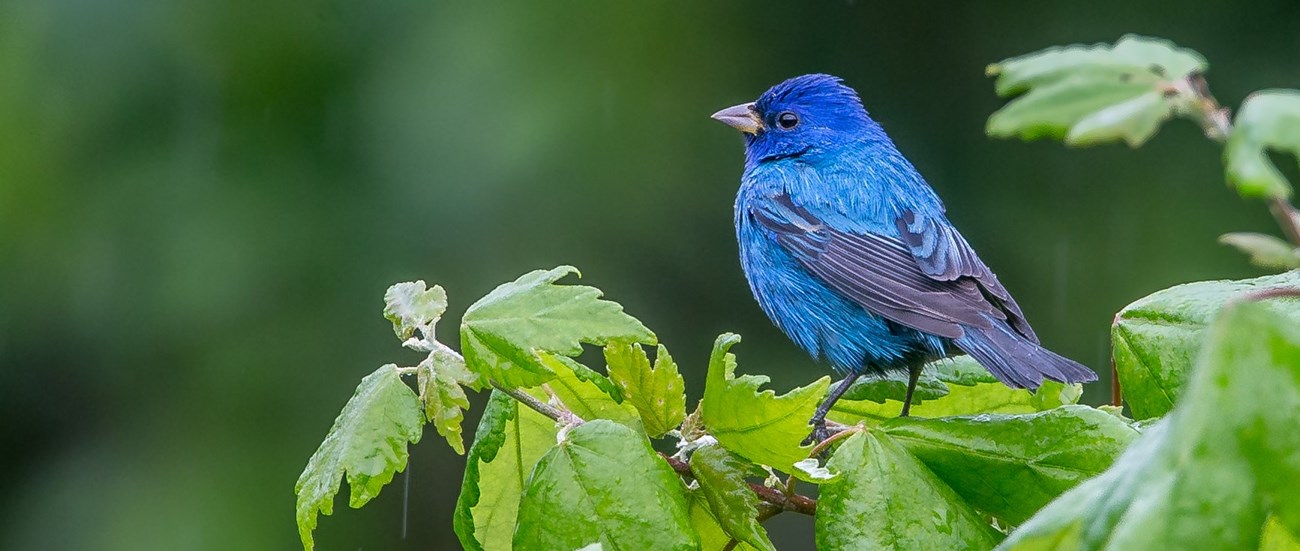Last updated: June 10, 2021
Article
Breeding bird monitoring at Richmond National Battlefield Park: 2019 status and trends
Monitoring highlights
- During the summer of 2019, ten volunteers conducted 86 surveys at 34 sites across the park.
- Several species of regional concern were documented in relatively high numbers, including yellow-billed cuckoos, wood thrushes, and ovenbirds.
- Forest bird community index scores suggest moderate to high ecological health of park forest bird communities.
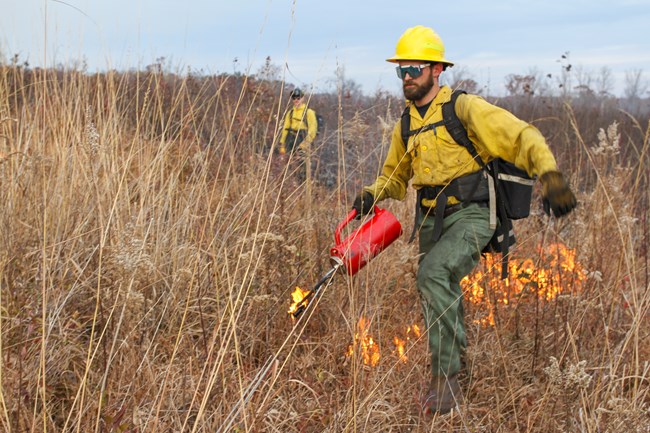
Introduction
For the last ten years, the scientists of the National Park Service’s Mid-Atlantic Network have worked with skilled local volunteers to monitor bird populations in national parks across the mid-Atlantic region. The information gathered is used to improve our understanding of the relationships between breeding birds, available habitats, and park resource management. The goal of the program is to develop the best available science so national parks can better understand and protect their resources. This brief provides a summary of 2019 breeding bird monitoring results for Richmond National Battlefield Park.In the summer of 2019, nine volunteers conducted 86 surveys at 34 sites across the park. During a survey, volunteers documented every bird heard or seen over a ten minute period. Sites in both forest and grassland habitat were visited multiple times during the breeding season.
Since 2005, the park has utilized prescribed fire to maintain native warm-season grass meadows (currently 96 acres) for bird habitat. Results from 2019 show that some grassland specialists, like grasshopper sparrows — a species of conservation concern — are present but are in very low abundance (see Species of Regional Concern, below).
Species of Regional Concern
The Partners in Flight Program is a network of organizations involved in bird conservation in the Western Hemisphere. This program has identified a number of bird species that are declining and facing increasing threats across the mid-Atlantic region. These birds are of particular interest to park managers, and 14 species of regional concern were observed during 2019 bird monitoring.
Below are the top ten most observed species of regional concern documented in the park in 2019:
| Common name | Number of observations |
|---|---|
| Yellow-billed cuckoo | 60 |
| Wood thrush | 46 |
| Ovenbird | 45 |
| Field sparrow | 17 |
| Northern flicker | 9 |
| Chimney swift | 8 |
| Black-and-white warbler | 3 |
| Eastern towhee | 3 |
| Scarlet tanager | 3 |
| Grasshopper sparrow | 2 |
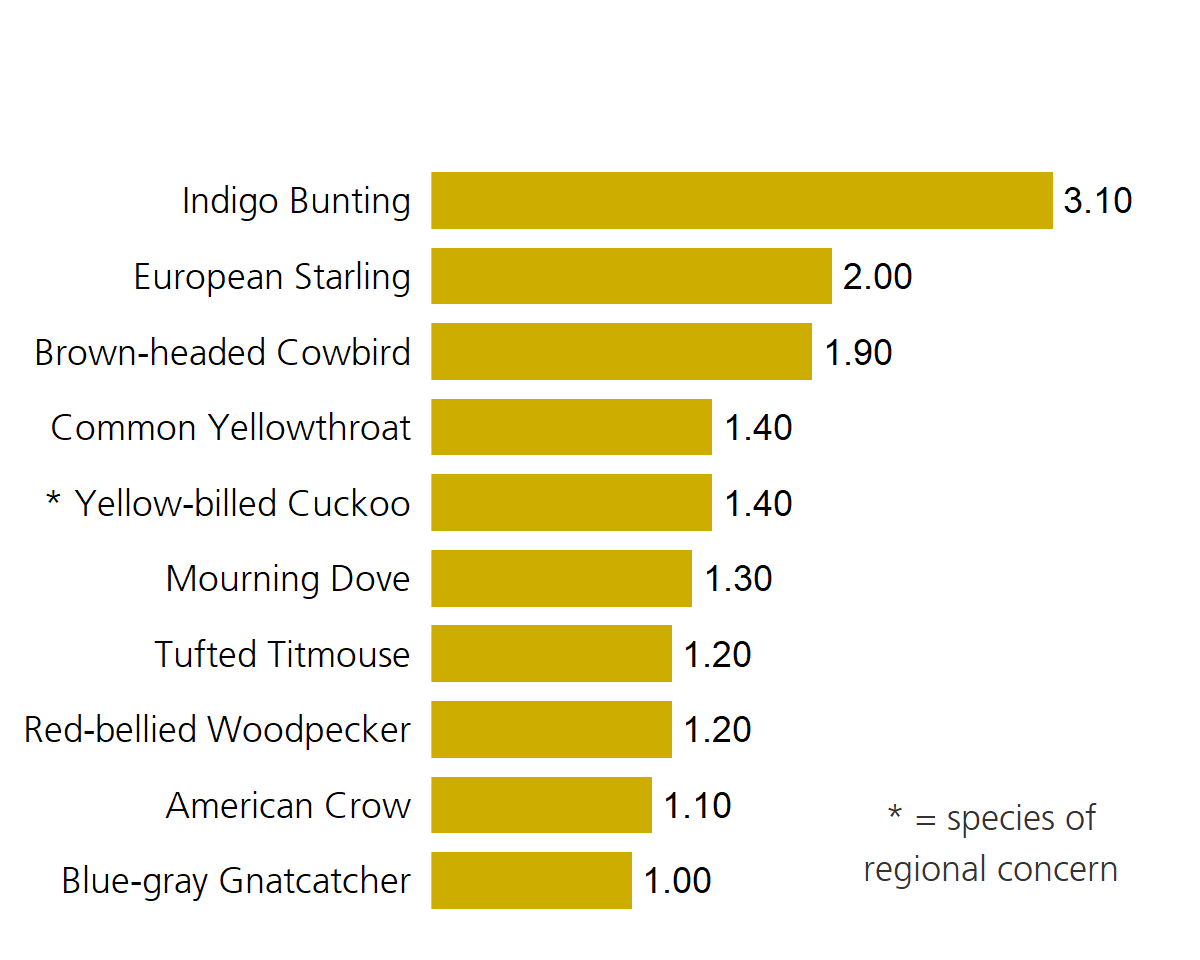
Grassland monitoring
The most abundant bird in grassland sites was indigo buntings (Figure 1). European starlings, a non-native bird, were also abundant, primarily due to the observation of a single large flock. Most birds observed in grassland sites were habitat generalists — native grassland specialists were uncommon. For example, only two grasshopper sparrows were observed in 2019. Continued and improved management of warm-season grass meadows should support a future increase in grassland-dependent species like grasshopper sparrows.
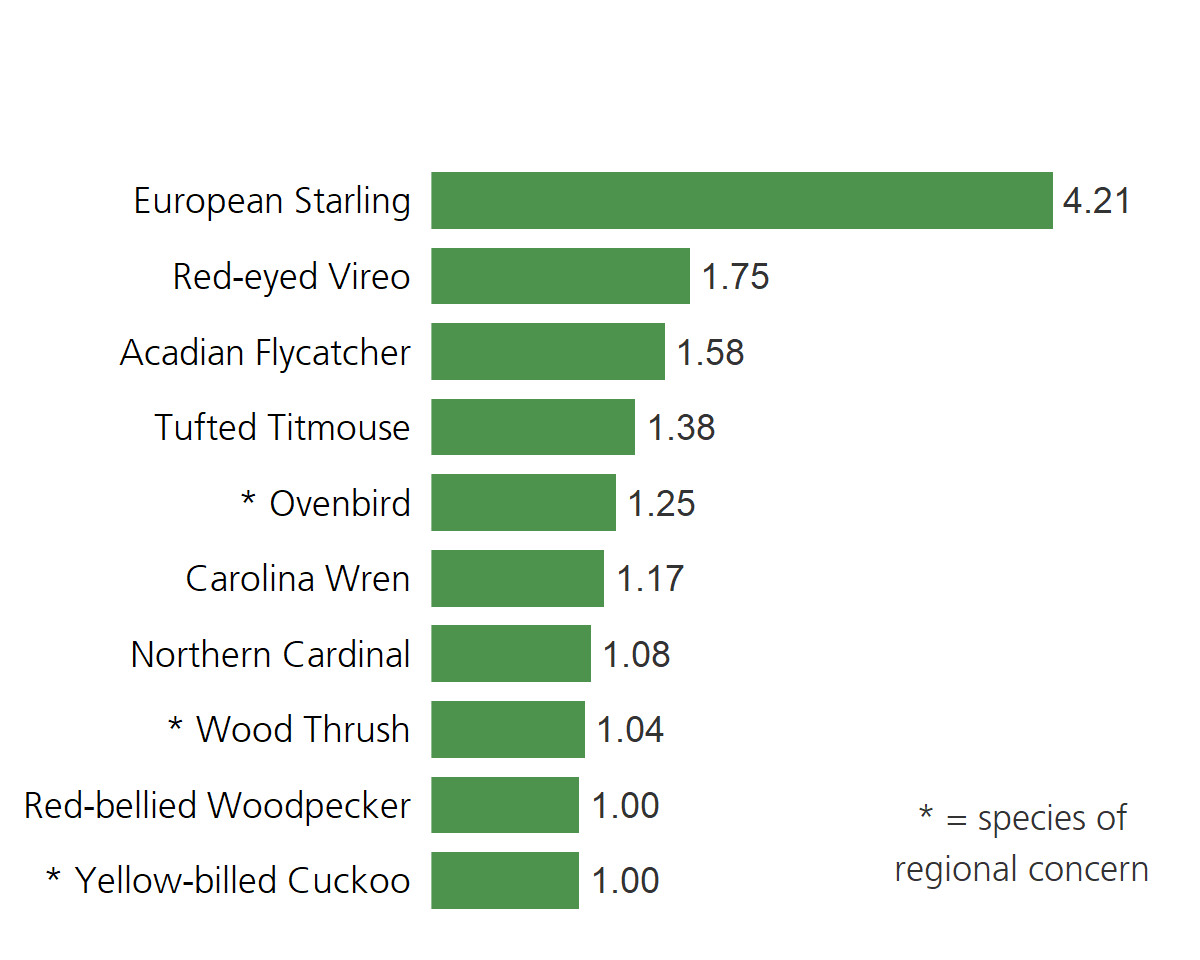
Forest monitoring
The most abundant bird in forested monitoring sites was the European starling, again, due to a large flock observed during monitoring (Figure 2). Interestingly, ovenbirds and wood thrushes, both species of regional conservation concern, were also relatively abundant. These two species depend on larger intact forest ecosystems. With increasing urbanization around the park, the relatively high abundance of wood thrushes and ovenbirds shows the importance of park forests to local bird populations.
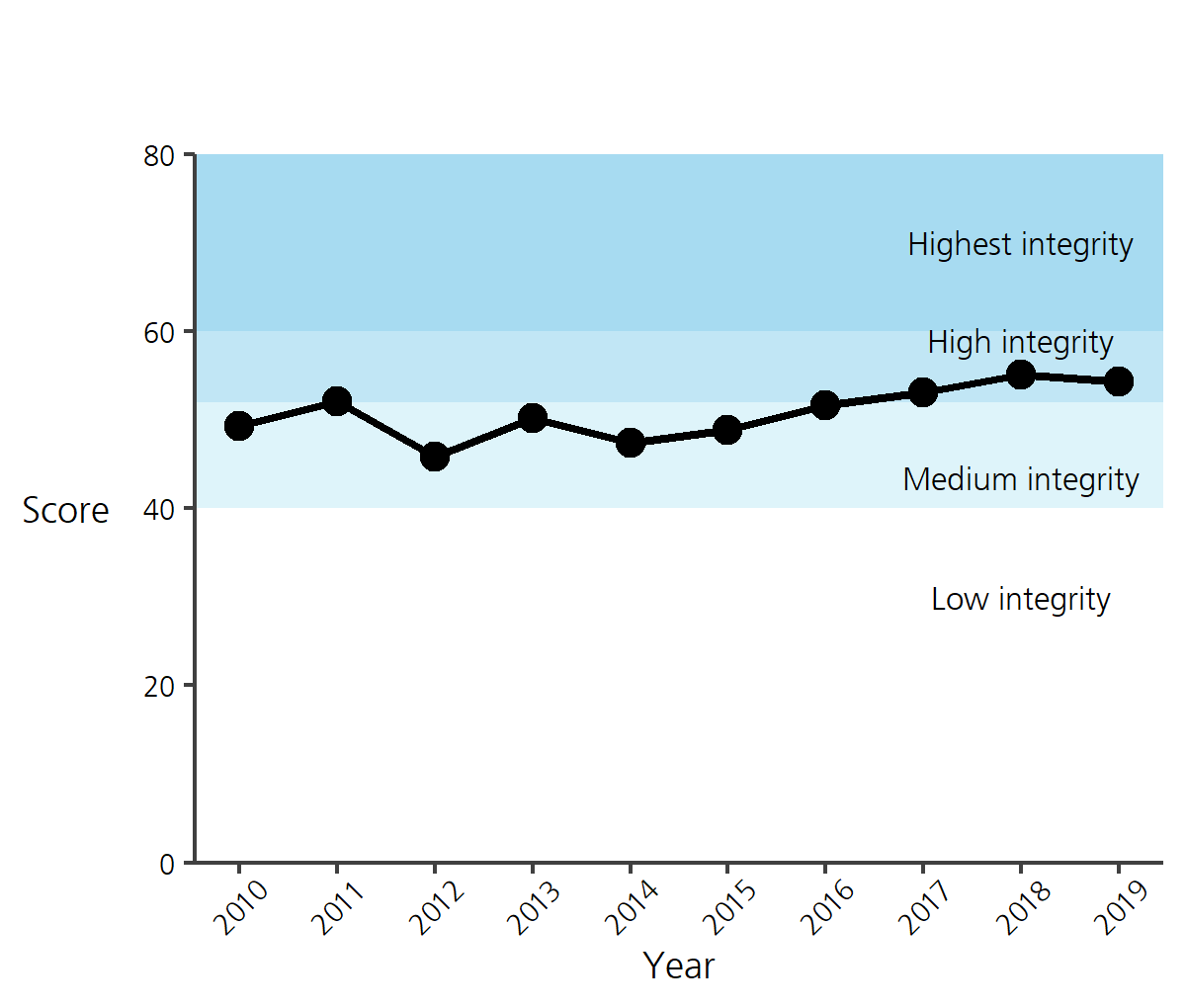
Forest bird community index
Scientists can study the abundance of all the bird species in an area to determine the overall health of the bird community. The forest bird community index score (O’Connell et al., 2000) for the park shows that the forest bird community in the park is moderately to highly healthy (i.e. has “medium” to “high integrity”; Figure 3). With increased urbanization around the park, it may be difficult for the park to indefinitely support this full forest bird community. It’s possible that conservation of forests on surrounding private lands may be important for the long-term persistence of Richmond National Battlefield’s forest bird communities.For more information, see the park’s 2019 breeding bird monitoring report (Johnson, 2020) or contact Mid-atlantic Network Ecologist Mark Johnson.
Click here for a printable pdf of this article.

